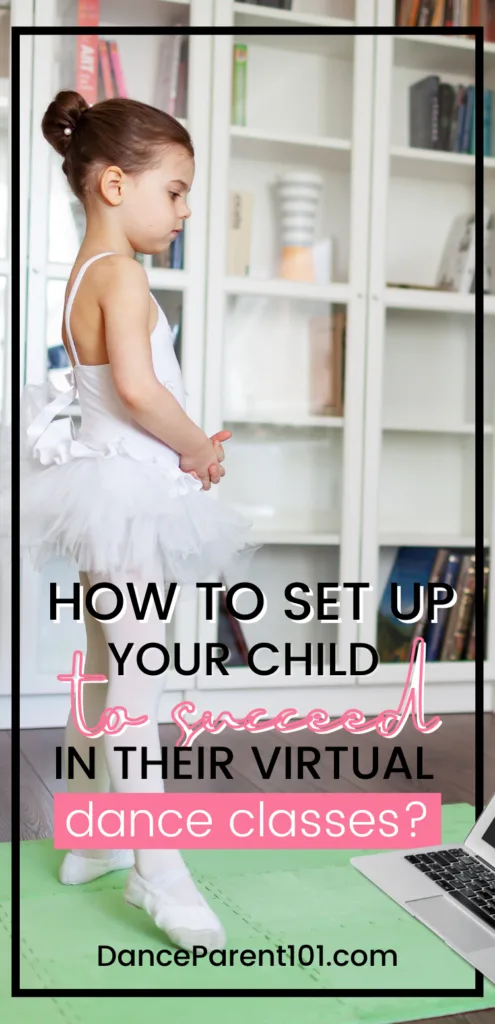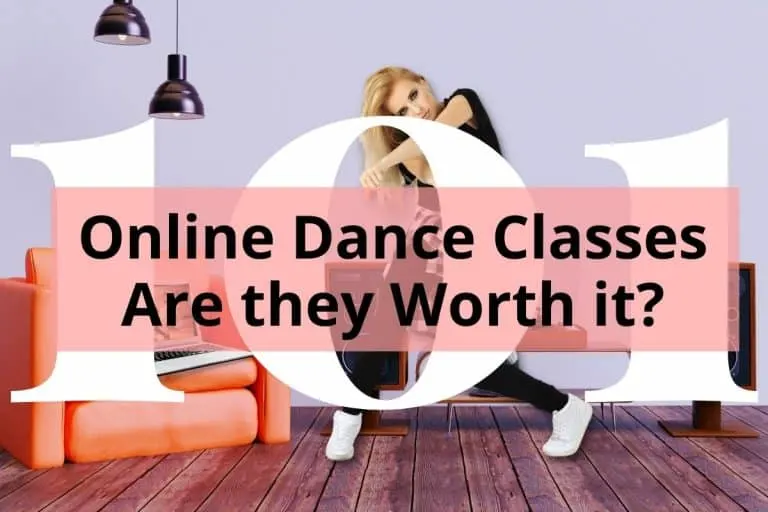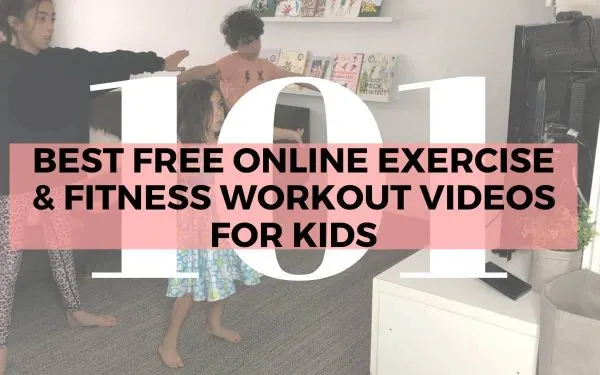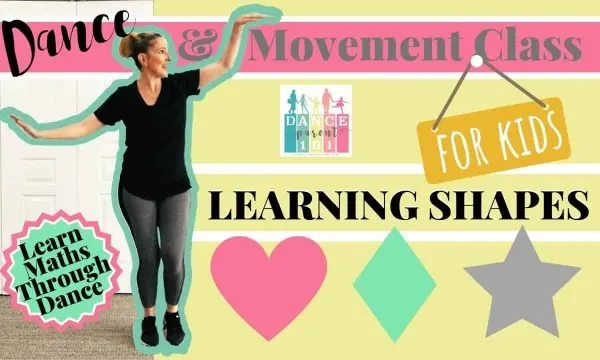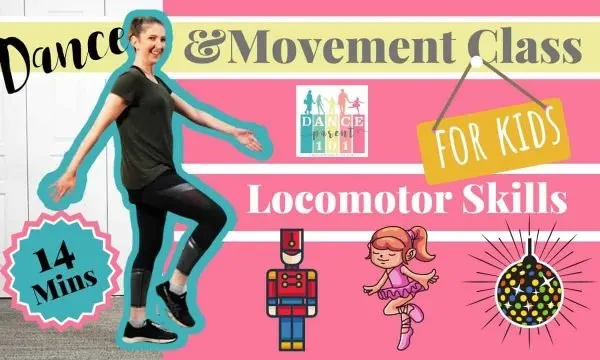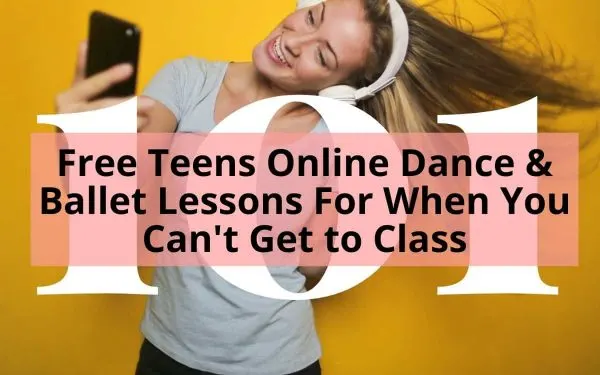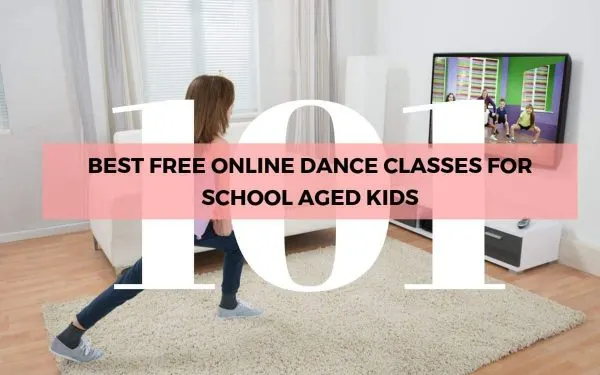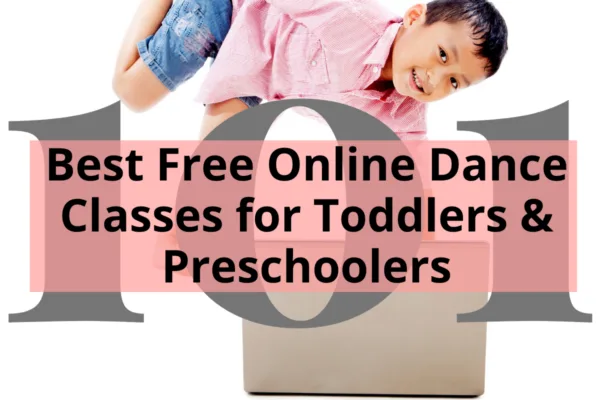
I currently have two daughters at home who at the beginning of 2020 were both enrolled in three or four dance and ballet lessons a week attending them in the dance studio. Then the pandemic hit and we were in lockdown doing distance school education and online or virtual dance classes. My ten-year-old has adapted quite well, but it has really been a rocky road full of battles, headaches, and arguments with my then four now five-year-old.
We are currently now on our second round of quarantine – schools closed again, and we only have four valid reasons to leave our homes as our government has announced we are in a state of emergency, but this time around I am armed with knowledge and hindsight and I can already tell you that transferring back into online dance classes has been much easier.
The top three tips I can give you to set your child up for success doing their real-time virtual and online dance classes in my experience isto: firstly make sure your home is set up to encourage and not hinder your child’s online learning. Secondly, be present or easily accessible to your child during their lessons. Thirdly and most importantly only enroll them in lessons they are excited about and really want to do.
Keep reading on as I unpack each of these three top tips (and add on one more at the end) with ideas, inspiration, and guides on how to effectively implement them into your home.
Setting your Home up for Success with Virtual and Online Dance Classes
You don’t need to build a full dance studio in your home to set your child up for success, although if you do have the resources to do so check out these articles I wrote for some inspiration.
But there are a few things you can do to ensure your child is motivated to dance at home and not hindered by their environment. You can pick and choose to implement some of the ideas on the list, you don’t have to do them all except for this first one:
1. Sort out your internet connection
If you are paying your dance teacher or studio to provide you with virtual dance lessons then you also need to ensure that your internet connection and plan is able to provide you with the speed and bandwidth necessary to stream your online dance lessons.
Our internet connection was one of the things that really hindered my girls from enjoying their online lessons in the beginning. The lesson would freeze, the music would be lagging, the connection would totally drop out. My girls would be learning a step or trying to keep in time with the music and it was all nearly very impossible. Having been a dancer and a teacher, I could see that if this is what virtual lessons were going to be it just wasn’t going to work out. Because of where we were living at the time, I couldn’t actually upgrade our apartment internet, so my next solution was to create a hotspot using my phone’s internet and use that instead. This worked much better with less drop out so it might be a solution for you as well.
But we have recently moved and have upgraded our internet plan and I will honestly say that during round two of virtual dance lessons, this has been a big game-changer for us. Our lessons are running smoothly and if there are any issues they are no longer caused on our end which leads me into this next point…..
Now not all of your internet and streaming problems will be caused by you. We have been lucky that our teacher has been proactive in learning how to best use zoom for online lessons and with experience has now worked out how to ensure the music lags less or is more aware of this problem and is always recording herself doing the dances and steps and sending them to us through our class dance app for us to watch later. She has also set up her music to be streamed from her computer and not a stereo which has helped as well as a few other tweaks. So if everything is working on your end, but you are still having problems – set up a time to speak with your teacher outside of class to try and work out any issues (check out my article “How to sort out problems.
2. The Screen
You ideally want to stream the lesson on the biggest screen possible, which in many cases will be your television. Your next alternative may be a computer screen. The reason for this is so that your child can see their teacher and follow the lesson easily. It can also help your child feel seen and more engaged as part of the class. But depending on the type of television you have, you may not be able to easily hook it up to your dance streaming service as most apps and software is made for computers, tablets, and phones and for the fact that you also need your television fitted with a camera.

A few ways to get around this – and you will need to search yourself for exactly how to do it depending on the tech that you own – are:
- USE MIRRORING OR AIRPLAY TO YOUR TV FROM YOUR TABLET OR PHONE
Place your tablet or phone so that the camera can see your child and link it through mirroring or airplay with your television. The cons of this for me have been lag – meaning that everything is playing a second or so behind it being live, so it is hard to be interactive with your teacher. The other con is that I find it can drop out at any time making it annoying as you are constantly having to reconnect the airplay. But if you have a good connection in your home then go ahead and use this method. - CONNECT YOUR LAPTOP TO THE TV
Now I know you can do this with some special cords as my dad does it to watch movies off his laptop. Just ask your local IT specialist what you need for your specific television and laptop to make it work. Then make sure you set up the laptop so the webcam and your dance teacher can see your child easily. - USE A TV CAM AND USE AN APP ON YOUR SMART TV TO STREAM THE LESSON
I am going to assume that not all dance teachers are using the zoom platform like ours is, so do a bit of research and see if whatever your teacher is using is available as a tv app – but note you will need a camera attached to your tv so your teacher can see your child. We have a PlayStation VR and play Just Dance so we have a camera connected via our PlayStation and you can look at our set up in this article if it is something you need to look into.
Unfortunately for us the space (which I write about further down) where our television is, doesn’t work well for online real-time lessons and so my girls currently use their tablets to connect and do their virtual dance lessons in their bedrooms. So in our case, the space has been more important than the screen size in determining what is best for us!
3. Your Camera Setup
Wherever and however you set your camera up it must be able to show your whole child when they are dancing. If their teacher can only see their upper body or only their lower body they cannot give them corrections or let them know when they are doing well.
You are going to find that this can actually be quite hard to achieve as to film a wide space for dancing on the screen, lessons are usually filmed horizontally or in landscape rather than vertically in portrait mode as you would do when filming on your phone. Webcams on a computer will also film in horizontal landscape mode and what this essentially means is that to get your entire body into the frame you need to be further back and away from the camera.
When your camera and screen are within the same device it can cause the difficulty that you either don’t have enough space to move backwards to get your whole body on the screen – such as if you are in your lounge or tv room or that because you are further back you can’t see your tablet or ipad screen as well. But all it might take is moving the camera around, or getting a few books to lift your device higher or lower to make all the difference.
Therefore using the test video function on zoom or whatever streaming platform you are using before your lesson will improve your child’s experience and mean they get to focus on what is being taught rather than having to adjust the technology during the lesson.


We have found the lower the screen is to the ground the better it is.
4. Your Space – Where you do your lessons.
I have tried doing our lessons in a variety of spaces around our home and have learned that in order for everyone to take their lessons seriously and to be respectful to the teachers on the other end who are trying their hardest to motivate, engage and teach your child you should be trying to create the following type of environment for your child during their lesson. (Trying to get all of these right is super hard and is a big reason why we go into a studio for lessons in the first place!)
- PICK A SPACE WITH THE LARGEST AREA OF FREE SPACE
I have seen videos of children practising their dance lessons in entry rooms to their houses and I wondered why – then realised because it is probably the biggest open space where they don’t have to rearrange the furniture to be able to dance or it is because of the flooring. - PICK A SPACE WITH ADEQUATE FLOORING
Just because your garage is the biggest space you have does not necessarily mean this is where your kids should be dancing. The following is from the Ausdance Website Safety Fact Sheet #7 – ‘Even in the short-term, dancing or exercising on concrete floors will potentially cause injury, pain and irreversible damage to not only your feet and legs, but your entire body.’ Concrete flooring has absolutely no shock absorption, meaning that your child’s legs, bones and muscles will be put under extra stress whilst dancing. Unless you are prepared to build a safe dance floor for them to use in there, choose a different space. In your home wooden floors are best and carpet although awkard to dance on at least provides some spongey shock absorption, but be aware of what is under the carpet because not all installations may have a good underlay, that further reduces shock absorption when your child is dancing. - THINK ABOUT SAFETY
So we have talked about choosing your flooring safely, but also think about other things in the room. Will your child injury themselves on the corner of a coffee table if they lost their balance, or step into a pile of lego their brother was playing with? I have also seen many online videos of professionals using their kitchen benches as ballet barres, this is fine as long as things have been put away which can be hard when your child is supposed to start ballet class at 9am on a saturday morning, but you are still clearing the bench of all the dishes. - A SPACE WITHOUT DISTRACTIONS
This is a big one for my girls and the main reason they currently do the majority of their classes in their bedrooms. Your child needs to be able to hear their teacher clearly and not be interrupted by their two-year-old brother who thinks they are on a face time call and who wants to say hello or by a sibling wanting to use the tv to watch their favourite show or play on the console or by the noise of someone else in the house doing something that makes them feel as though they are missing out on something more fun. They need to be in a space with the least amount of distractions so they can concentrate on getting the most our of their lesson.

In short- for me the biggest factor for success has been arranging their furniture in their bedrooms to create a nice big QUIET space for my girls to do their class in. (Previously they shared rooms so I moved furniture in a spare room for them to use without distraction.)
4. Equipment
If you really want to set your child up for success with their online and virtual dance lessons than ensuring you have the appropriate equipment for their classes can be really important.
BALLET BARRE
Whether it is for practicing ballet plies or shuffles in a tap class using the back of a chair or a kitchen bench for a few weeks when doing online and virtual dance lessons is fine, but there is a reason they are not the preferred method or piece of equipment used in a dance studio.
For many the thought of installing a ballet barre or buying or making a portable ballet barre for their child feels like a space waster, something that will be used only temporarily, or too hard or expensive – you know for something that will be used just until everything gets back to normal. But I am going to implore you that it is none of those things especially if your child is serious about improving their dancing. Having a ballet barre at home for your aspiring dancer to use lets them know you support their passion, encourages them to practice outside of their lesson times even when we are all back in the studio doing lessons, provides safe support during their lesson and creates a sense of professionalism and seriousness as they have the right equipment for the task. Also when it is not being used it can also make a nice looking addition to a bedroom.
If you are wondering what type of barre you should be looking at to buy I have an article all about choosing the best barre for your child which you can read here. Alternatively if you are wanting to save some money, or like a DIY project, I made nine different DIY ballet barres to test out which one I liked best and you can view all the video tutorials and read all the instructions for making one here.

Our DIY wood and pvc ballet barre has come in handy during Celine’s online tap lessons as she uses it to balance herself when learning new steps or practicing techniques and strengthening her ankles. Sydney uses her double DIY metal barre for ballet as well as for stretching and other dance practice during the week.
FLOORING
Another thing you may wish to invest in is portable dance flooring. For ballet Sydney is currently finding the carpet in her room is fine, and occasionally if it is quiet will come and do class in our open space kitchen where there is wood flooring. But Sydney is not currently practicing a lot of turns or pirouettes and does not do pointe work being only 10 whereas if you child is doing any of this, your home flooring will not be conducive to keeping up these skills. Celine does tap dance and so I have used a couple of different approaches to help her hear her beats and taps which I list and write about below.
BALLET AND JAZZ DANCE CLASS
For ballet and jazz class, Dazzle Distributors make a product called Dot 2 Dance which are round circles made in differing sizes and covered in vinyl dance flooring known as Marley or tarket. I have written a review of their product which you can read about here.
TAP DANCE CLASS
Appropriate flooring is important for successful learning of tap dance through online and virtual lessons. But one thing I would not recommend is letting your child dance on your wooden or tiled floors so they can make their tapping sounds because it will scratch and ruin your floors.
Instead take a look at these various flooring options:
- CARDBOARD
If you are unable to source any of the following, a quick and easy solution is to break open and flatten a large cardboard packing box or similar, making sure it is free of tape or staples and to lie this on your floor for your child to tap on. When we first started online lessons this is what Celine did her home tap lessons on. Just make sure that it is a big box and that there isn’t a risk of tripping or slipping – none of which occurred when we used ours. - PLYWOOD
Celine my five-year-old is currently tapping away during her lessons on the back of a piece of plywood that has been sitting in my garage waiting to be useful. It was supposed to be fitted as the backing of a pantry cupboard, but I never installed it. It is long and thin and although quite a smooth surface is not too slippery. Check around your house or garage and see what you have put away to be useful or friends or relatives or simply go down to your local hardware store and buy a square for twenty or thirty dollars – it may not last for every but the investment is better than having to repair your home flooring. - PROFESSIONAL TAP DANCE FLOORING
You can purchase specially developed flooring for tap dancing and it comes in a variety of styles. Harlequin floors sells a roll out mat, the Dot 2 Dance which I mentioned under ballet and jazz can be tapped on and there are also wooden tap squares you can buy which I mention in my article What every Tap Dancer Needs here which are made to be durable and create a nice resonance when tapping.

MIRROR
Lastly, a mirror can also help your child during their lessons to ensure they have correct placement and that their movements actually look like what they feel and think their body is doing. In all honesty, unless your child is having a private lesson, your teacher will not pick up every little error that needs to be corrected through zoom as thoroughly as they would in the classroom, but if they are like our teacher they are trying their best to do so. This is why a mirror is important so your child can learn to self-correct. My eldest is lucky she has a mirrored wardrobe door. I have put a small mirror in my younger daughter’s room, it is not very effective, but as she is younger and only doing tap currently the flooring is more important for her learning than a mirror anyway.
4. Dance Wear
I am going to say that I did not personally push my girls, in the beginning, to put on their dance uniforms for their lessons as they were resistant to doing their them online. They felt awkward getting ready but not actually going anywhere and I guess by not wearing their uniform it was their way of saying ok I’ll do this, but I am doing it my way – dancing in some leggings and a t-shirt instead. It gave them some control over a rather out of control situation.
Gradually over the weeks of doing their lessons online and seeing the other students in their class as well, it has all become more routine and normalized and they have started to naturally wear their uniforms and leotards. We now generally prepare as we normally would getting changed into our dance clothes, doing our hair, getting a water bottle etc…. Sydney still does prefer wearing socks instead of her ballet shoes though as she is doing her lessons on the carpet in her room. I think it is important to be dressed properly, but it shouldn’t be a fight or sticking point as to whether your child actually participates in the class or not.
This view and way of approaching this topic is a bit controversial and won’t work for all families, children and dance schools. Our teacher has the approach that she would rather the kids be present and online then make a big deal about them not wearing their uniform, although she actively encourages and praises them for wearing the appropriate clothing. But not all teachers and schools will take this approach.
Your teacher or studio may take the view that dressing the part is essential in ensuring that their students maintain their level of commitment and training whilst at home, and want the same standards of dress upheld as would occur in the actual studio.
You might also find that getting ready just as you normally would mentally prepare your child for their lesson and that they are much more invested in, motivated, and engaged throughout their lesson when dressed for success.
BE PRESENT OR EASILY ACCESSIBLE TO YOUR CHILD DURING THEIR LESSONS
Online real-time learning comes with many complications and I have found that in the beginning, I needed to be present in the room with my five-year-old throughout her lesson to be able to assist with both technical and motivational or learning issues so don’t be surprised if instead of being able to catch up on that book or have some quiet time to yourself you are doing plies or step ball changes in your living room instead! Over time as we tweaked her lessons as I write about in the next tip, I have become less and less needed and currently, once she has started her lesson and I have ensured there are not technical issues I close her door and walk out, making sure to keep within ear shot and of course checking on her and the lesson periodically to make sure it is all going well – we do a thumbs up signal when I poke my head in so I don’t disturb her too much.
It is also wise to make sure you are nearby or available during your older children’s classes. If you can’t, make sure you leave a copy of ALL the information relating to the lesson for your child or another adult as Sydney has missed out on two lessons because I wasn’t nearby and didn’t follow this advice. The first time she accidentally logged herself out and her dad unknowingly found an old code which they entered and which left them sitting there waiting to be let into the lesson for 20minutes before they called me to ask me if I knew what was wrong. Then just this weekend, I wrote the codes down for Sydney, but the time of the lesson had changed and although she had done the lesson online at the new time the previous week, she was used to the old-time and missed 30minutes of her lesson. I generally am home during her classes and sporadically check on her progress in her lessons, but as Sydney has the goal of completing her ballet exams at the end of the year she doesn’t need monitoring from me, she is self disciplined enough even at ten to work hard and stay engaged for her whole lesson.
Having four kids of various ages and with experience of doing both distance learning as well as online dance classes with my girls I have become very aware that all my children have differing levels of needs from me in terms of how much assistance they need to be able to engage in their virtual learning and so with this knowledge I am writing the following guidelines.
| Ages | Level of Supervision |
|---|---|
| 2-4 | Actively particpate in all aspects of the class with your child as much as needed – this may include doing the actual lesson next to them. |
| 5-8 | Remind your child when it is time to get ready and help them prepare for their lesson. Help your child log on to their lessons, sit with them and wait for their teacher to invite them into the class. Be as present and active in your child’s class as your child needs you to be – whether it be doing parts of the lesson alongside them, helping them get tricky steps, moving their bodies into the right position, helping them choose the correct arm or leg or just sitting and watching them. Gradually reduce your presence as they become used to the online learning medium. When you do leave the room or learning space, ensure you are checking on your child not only to ensure they are engaged in their lesson but to encourage and show them support. You might find you are needed less and then one day, they all the sudden need more support – this is fine and will most probably happen if they are having difficulty mastering a new skill. |
| 9-12 | Remind your child when it is time to get ready and prepare for their online dance classes. Give your child their login passwords and a copy of their schedule and allow them to log in to their classes themselves. Check on them at the beginning of the lesson to ensure they have logged on and the class has started. Be available during the lesson to deal with technical issues and to sporadically give encouragement and check on their progress and learning. |
| 13+ | Allow them to receive all notifications and emails regarding their online learning and to be responsible for turning up to classes prepared and on time. (Ensure you also receive a copy so you can assist them when needed.) |
ONLY ENROL YOUR CHILD IN THE VIRTUAL DANCE LESSONS THAT THEY ARE EXCITED ABOUT AND REALLY WANT TO DO.
If you were to scour this website, you might come across some articles where I have written about the importance of doing ballet lessons when choosing which classes and styles to do. But what I have also written is that ballet classes should not be chosen to the detriment of your child’s enjoyment of dance.
When enrolling your child into online lessons, it is so important to take that last statement into consideration. And it is also important to realize that your child after doing online lessons may also change their mind about what excites them and what they really want to do and that is ok!
At the beginning of the year in the studio, Celine was doing hip hop, ballet, tap and jazz. After several weeks of doing online dance classes as well as online distance school learning, it was obvious if we continued she might have given up on dance completely so I asked her to choose just one style, but it was a little too late – she just wasn’t into online learning at all. Relieved she chose hip hop. But after several more weeks for various reasons she was struggling to learn her routine online and doing her weekly classes became an ongoing battle and so we stopped completely, deciding that we would try again when the studio reopened. And when it did she didn’t want to do hip hop at all anymore, but jumped straight back into ballet, tap and jazz and was loving it again. Two weeks later, schools and our dance studio closed again. I immediately said that she should choose just one style to keep doing online and she chose tap dance. So far we have been loving our online tap lessons using many of the tips I have written about in this post!
Sydney also decided on cutting out one ballet lesson when we started online. To sharpen her skills she had been doing a weekly ballet class at a level lower than her own. When we went online she immediately decided she wasn’t going to continue with that lesson, which I was dissapointed with as I knew it was helping her develop her technique, but it was more important to me that she stay self motivated to dance which she has and she looks forward to the her weekly ballet and musical theatre lessons.
STAY IN THE KNOW
Latly it is important when all your lessons and classes are online it is really important that you keep up to date and knowledgeable about everything that is going on with your dance studio and that if you use an organizer or shared calendar that you use these to ensure everyone in your household knows what is going on as well. Generally, your teachers and school are going to be sending out as much information as they can to keep you informed which can sometimes feel like information overload – especially if things are constantly being updated and changed. But if you read earlier about how Sydney missed out on half of two of her lessons, it is really important to read everything your teachers are sending out and to mark calendars appropriately with changes and updates to ensure nothing gets missed.
Also if you don’t already make sure you follow your dance schools social pages as this is where many teachers put up messages they need to quickly get out to their students and parents.
One final tip is to put an alarm in your phone to remind you when classes are starting especially if your kids are not attending school as this rock in your day means that time has a different meaning in your home – we accidentally missed two different weeks of Celine’s lessons last term. Earlier on those days, we had spoken about the lesson so we knew we were supposed to attend them online, but because we were so engaged in other activities we missed the window of the lesson! Luckily these were towards when we ended up stopping anyway
Other Articles you Might Be Interested In!
Share this article on Pinterest Now!
